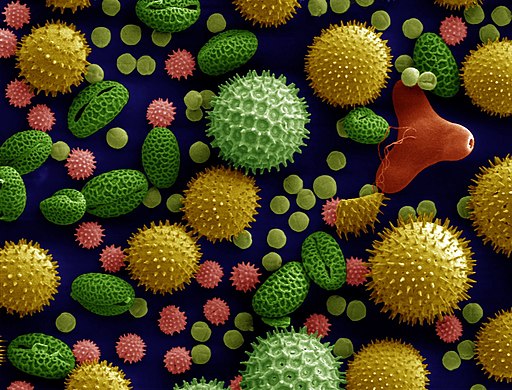Today’s tree pollen count in Chicago is 1600, which is 100 more than the 1500 limit, which indicates a dangerous air quality warning. Dr. Joseph Leija, who performs the official allergy count for the Midwest states:
“After only seven days of allergy count recording, we are documenting the first air quality alert in the 2012 allergy reporting season. This is the first day of spring and this air quality alert will make many Midwesterners very miserable.”
Today’s official Gottlieb Allergy Count in Chicago is, “Trees Very High, Grass Low, Mold Low and Ragweed Low”, which means that many people in Chicago will be complaining about headaches, sinus congestion, runny noses and fatigue today.
Dr. Joseph Leija, allergist at Loyola’s Gottlieb Memorial Hospital, is the only certified allergist by the National Allergy Bureau to perform the daily official allergy count for the Midwest.
He says:
“Ragweed in March is unheard of in the Midwest; I have never seen an allergy count so unusual. The warm March temperatures and sunny skies have encouraged the early budding of trees and flowers and my phones at Gottlieb are ringing with sufferers seeking relief.
The recent rains followed by warm, sunny, summer-like temperatures have created the dangerously high tree pollen count. Allergy sufferers should stay indoors, keep the windows closed, use their air conditioners, and take their allergy medications.”
Allergic Rhinitis, also known as hay fever (hayfever) is a common allergy, most commonly caused by pollen, that shows signs and symptoms similar to those found in the common cold, such as congestion, sneezing, runny nose, itchy and tearful eyes, and sinus pressures. Unlike a cold, which is caused by a virus, allergic rhinitis is caused by an allergic response to airborne substances.

Pollen grains from various plants seen through an electron microscope
Hay fever is not associated with “hay” or fever “fever” – people with hay fever have normal body temperatures (unless they are ill with something else at the same time).
When spring arrives in countries far from the equator, a considerable number of people start showing allergic reactions. Hay fever caused by plants, specifically pollen, can affect individuals from as early as March, right through into the Autumn. Some patients have mild symptoms and do not seek medical advice. However, for those whose allergic rhinitis is severe and/or persistent, and performing daily tasks at school or work becomes difficult, medical intervention may be necessary.
Treatment svary enormously and have different levels of efficacy, depending on the patient, how they respond to medication, and also the allergen (the cause of the allergy). In most cases, however, therapies do lower symptoms and make it easier for the patient to cope.
A person with hay fever has an immune system which mistakenly attacks harmless substances as if they were harmful pathogens (illness-causing microbes). The immune response triggers the release of chemicals in the body, which cause the symptoms.
Experts estimate that approximately 20% of North Americans and Western Europeans suffer from some degree of allergic rhinitis. Allergic rhinitis can occur at any age, but tends to develop during childhood, and less commonly during early adulthood. In the vast majority of cases, symptoms tend to become less severe as the patient gets older.
Written by Petra Rattue